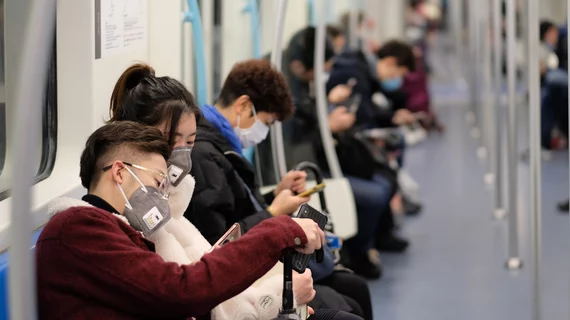‘Time to act is now’: Chinese researchers confirm abnormal chest CT findings in first coronavirus patients
Coronavirus continues to spread rapidly throughout China and beyond its borders into the U.S. And researchers who encountered the first infected patients are reporting similar radiological findings across the group, according to a recently published study.
There are currently five confirmed U.S. cases of the novel coronavirus (2019-nCov mutation), with more than 100 individuals under investigation, according to figures from the CDC. And in China, deaths have climbed above 80, with 2,744 confirmed-cases, the New York Times Reported Jan. 27.
Researchers from the country studied the initial 41 patients admitted to a designated hospital in Wuhan, China—the epicenter of the outbreak—noting each had abnormalities present in their CT scan suggestive of pneumonia, they wrote Jan. 24 in the Lancet.
“Common laboratory findings on admission to (the) hospital include lymphopenia and bilateral ground-glass opacity or consolidation in chest CT scans,” Chaolin Huang, MD, with Jin Yin-tan Hospital in Wuhan, and colleagues wrote. “These clinical presentations confounded early detection of infected cases, especially against a background of ongoing influenza and circulation of other respiratory viruses.”
The findings offer insight into the new betacornovirus, which causes serious acute respiratory symptoms similar to severe acute respiratory coronavirus, also known as SARS. However, the group found, 2019-nCov lacks upper respiratory tract symptoms such as rhinorrhea, sneezing and sore throat, as well as intestinal symptoms such as diarrhea.
The most common symptoms among the patients studied was fever (98%), cough (76%) and myalgia or fatigue (44%). A total of 13 individuals were admitted to the ICU, six of them died.
While all patients had chest CT abnormalities, 98% had bilateral involvement. Those examined in the ICU commonly showed “bilateral multiple lobular and subsegmental areas of consolidation” on CT. Non-ICU patients, however, yielded bilateral ground-glass opacity and “subsegmental areas of consolidation” on their scans.
Huang and co-investigators said they are “concerned” that the virus “could have acquired the ability for efficient human transmission.” The situation, they said, has “pandemic potential” and must be carefully monitored.
“Reliable quick pathogen tests and feasible differential diagnosis based on clinical description are crucial for clinicians in their first contact with suspected patients,” they wrote.
In a related commentary piece, Chen Wang, with China-Japan’s Friendship Hospital in Beijing and colleagues encouraged organizations and clinicians to share information as quickly as possible to help disease control and prevention. Front-line clinics, they said, must be armed with validated point-of-care diagnostic kits.
There are still many questions to be answered, they said, but time is of the essence.
“We have to be aware of the challenge and concerns brought by 2019-nCoV to our community,” the authors wrote. “Every effort should be given to understand and control the disease, and the time to act is now.”

